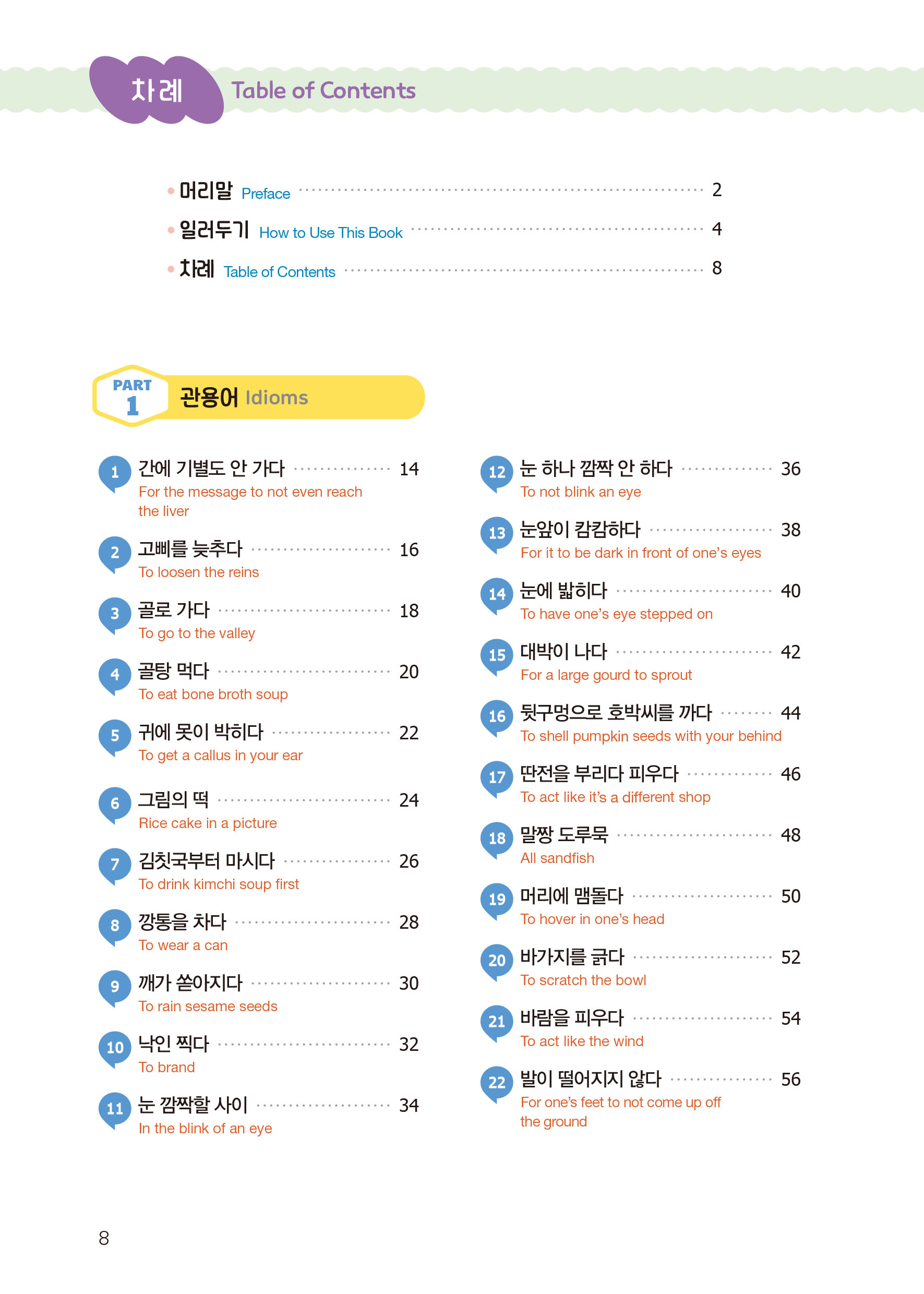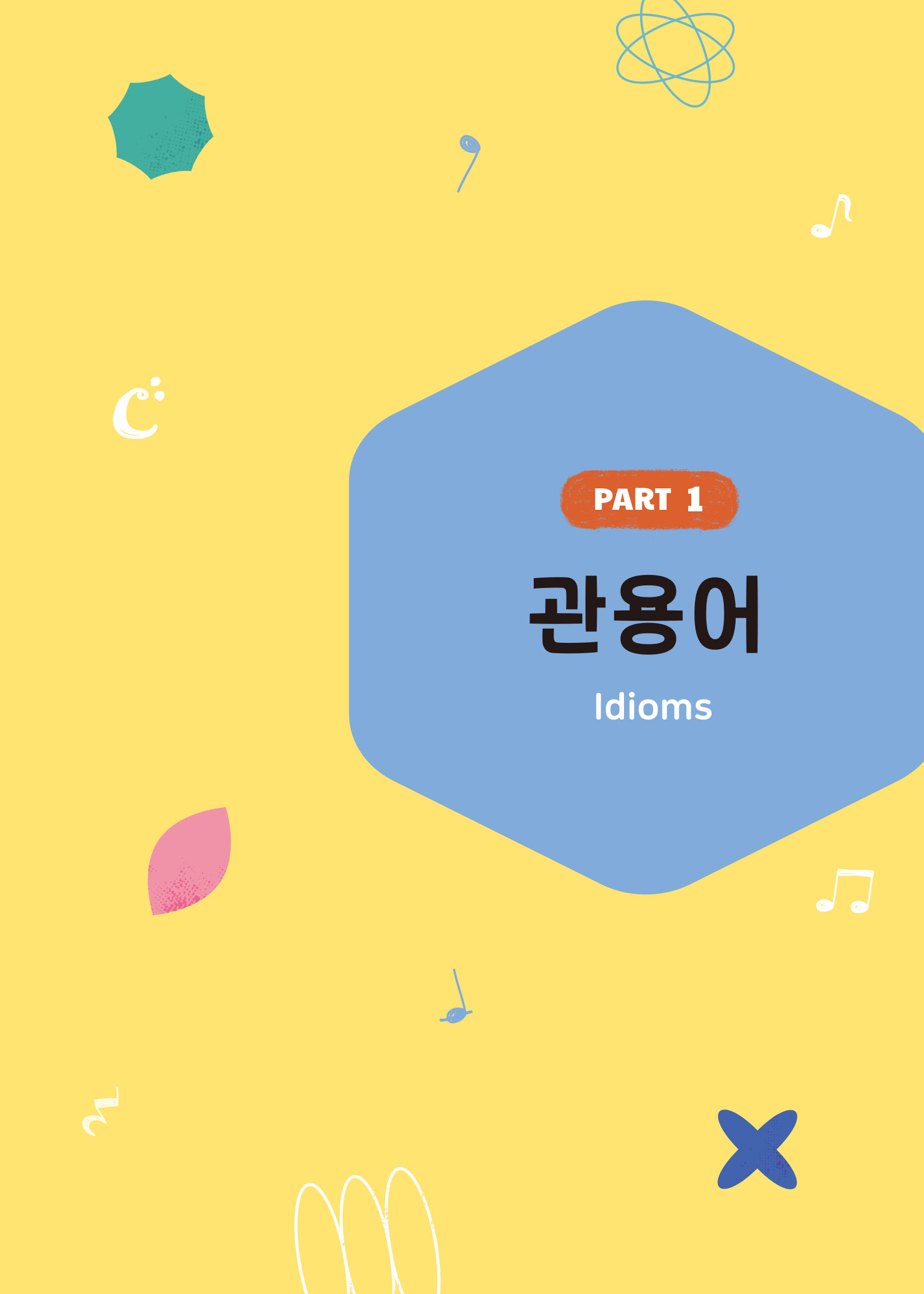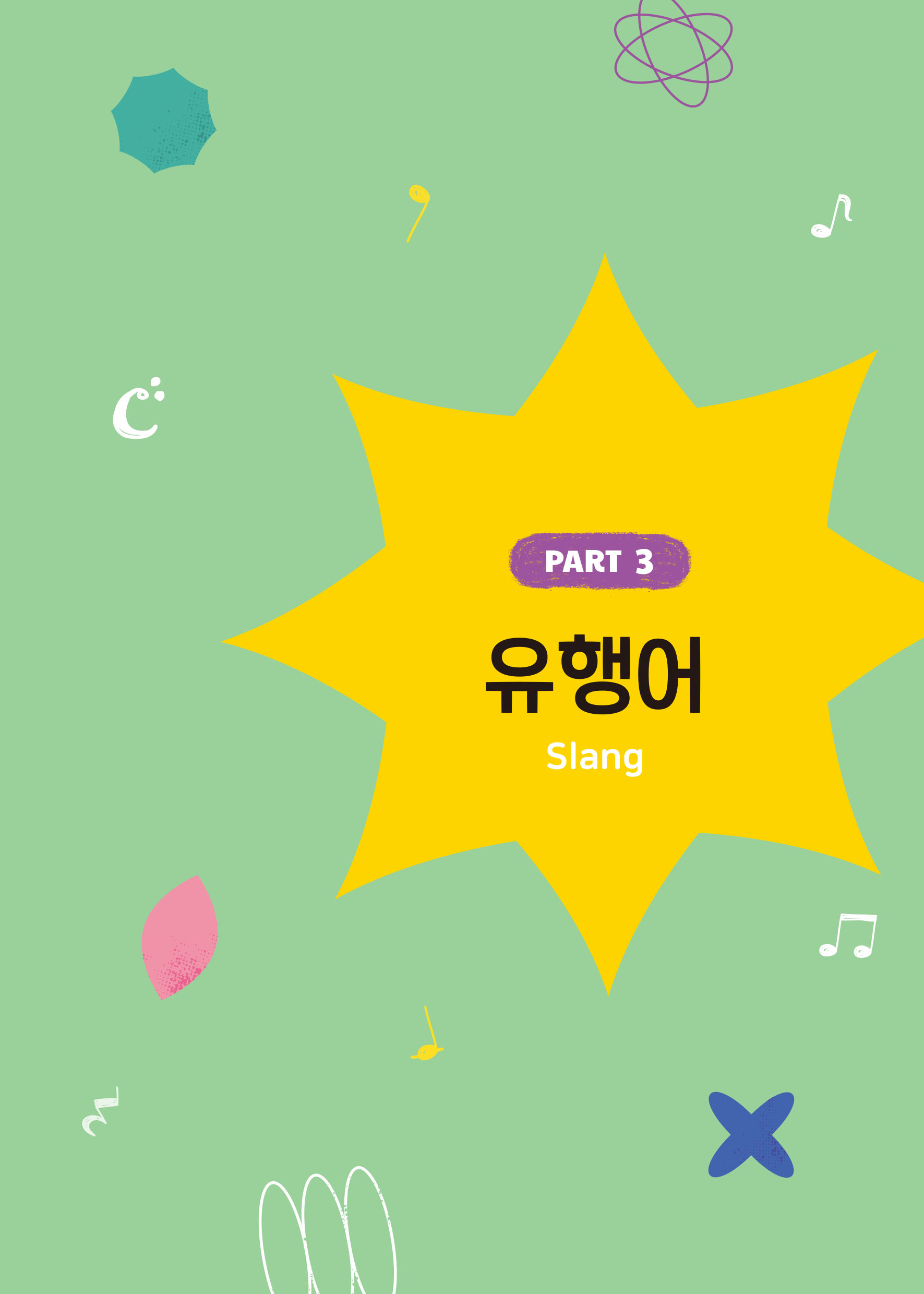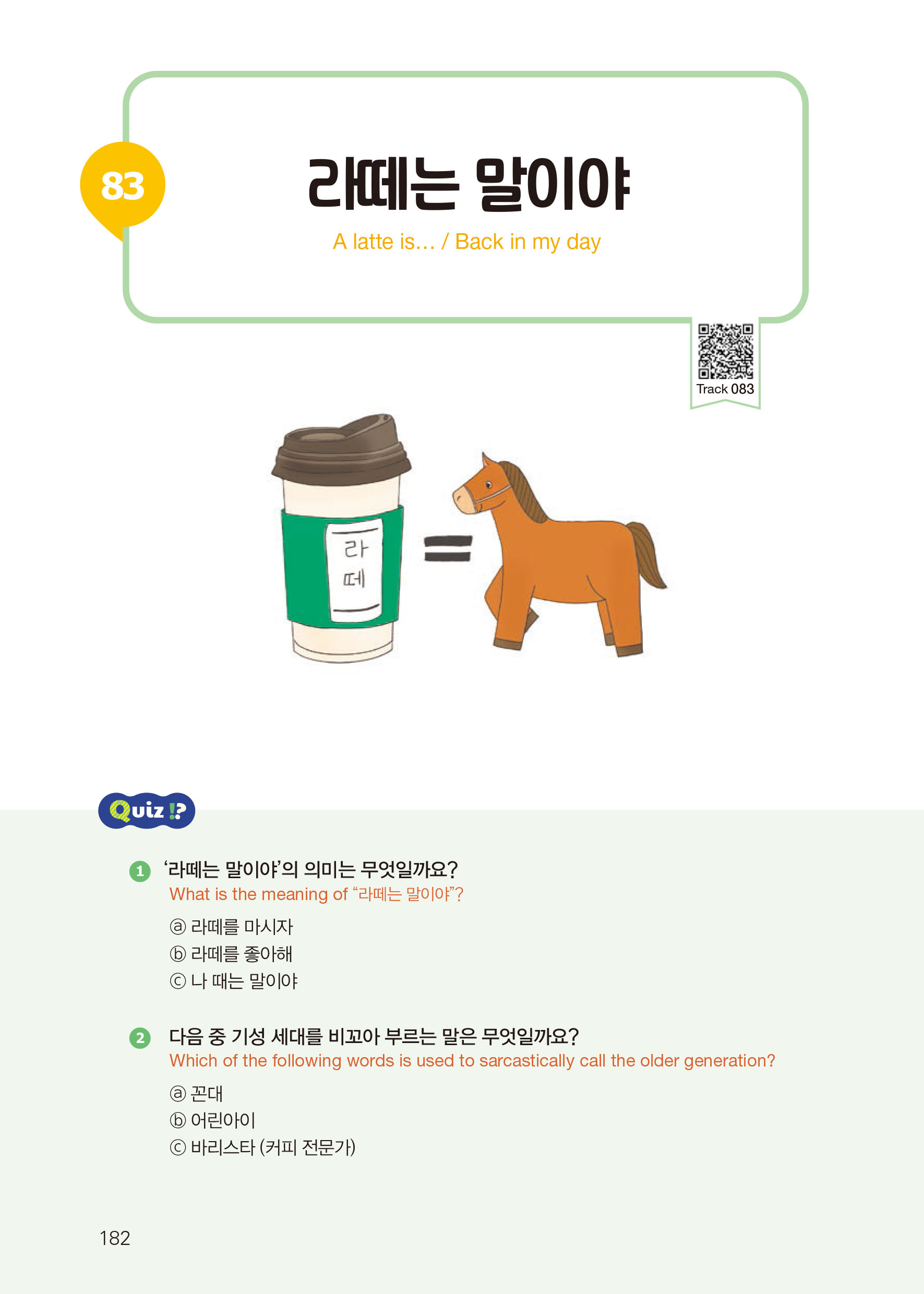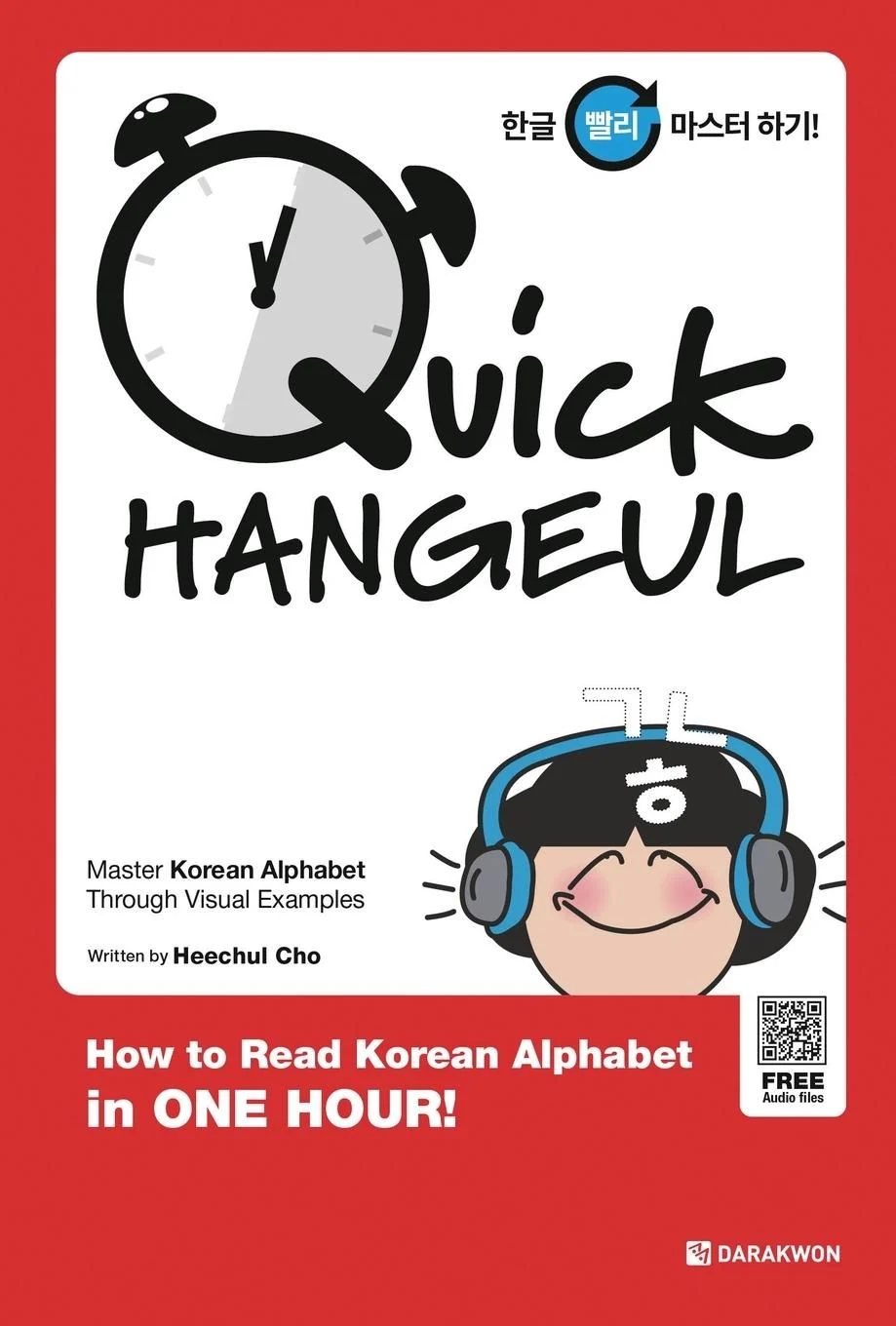Hyun Hee, Nielbock-Yoon Jaewon
100 Korean Idioms & Slang + Free QR Download Discovering the Origins of the Words in K-Pop
€29.90*
-
Art.num./ISBN: 9788927733348
-
Publisher: Darakwon
-
number of pages: 256
-
binding: Softcover
-
Year: 2024
-
Language: English, Korean
-
Author: Hyun Hee, Nielbock-Yoon Jaewon
In stock. Ready to ship within 1-3 weekdays
Product information "100 Korean Idioms & Slang + Free QR Download"
“When I listen to BTS’s song, the words ‘pumpkin seed’ are in there. Why on earth is that in there?”
“In BLACKPINK’s song, when they miss someone, why are ‘intestines’ burning up?”
Foreigners who like K-Pop and understand Korean lyrics to a certain degree might have seen the idioms and slang in the lyrics and tilted their head at these kinds of expressions.
By presenting the idioms, four-character idioms, and slang hidden in K-Pop lyrics along with fun illustrations and example sentences, “100 Korean Idioms & Slang” was designed to help Korean-language learners at the intermediate level and above encounter and deeply understand Korean emotions and culture expressed in K-Pop lyrics, all while acquiring and having a command of various Korean expressions. Through simple quizzes and detailed explanations, this book allows readers to learn the origin and meaning of 50 idioms, 25 four-character idioms, and 25 slang words that appear in song lyrics, and helps them to understand K-Pop lyrics. Vivid descriptive examples and dialogues are presented for each expression, so you can practice and understand the context in which the expressions are used. Additionally, for each expression and example sentence, MP3 audio files of professional voice actors are provided via QR code, so you can check and follow along with the correct pronunciation and intonation.
* Learn expressions that are actually used in K-Pop!
Finds and explains the meaning of idiomatic expressions, four-character idioms, and slang words that are actually used in various K-Pop songs that are gaining popularity all around the world, so that foreign learners can grow more accustomed to Korean idiomatic expressions that can be difficult and unfamiliar.
* You can infer the meaning of expressions through fun illustrations and quizzes to help you guess definitions!
Idiomatic expressions aren’t frequently used with a literal meaning. With fun illustrations and simple quizzes, interest is maintained and you can do simple checks of your own knowledge, allowing learners to try to infer the meaning and usage of idiomatic expressions for themselves.
* Through sound files, you can learn intonation and vivid nuance, and use expressions like a native speaker!
Various idiomatic expressions and slang are used not just in K-Pop lyrics, but also in the daily lives of Korean people. Accordingly, by listening to and following along with sound files of professional voice actors for all expressions and example sentences, you can practice intonation and vivid nuance, and use expressions naturally like Koreans do in real-life conversations.
* Check out idiomatic expressions found in a variety of K-Pop songs!
Each expression introduces the K-Pop songs in which it is used, allowing learners to check out various songs in which an expression appears, aside from the songs they already know. If there’s a song you’re unfamiliar with, you can search for it and listen to it, and review while listening to the lyrics to hear the context in which the expression you learned is used.
Table of Contents
서문 Preface 4
일러두기 How to Use This Book 6
차례 Table of Contents 10
Part 1 관용어 Idioms 12
1. 간에 기별도 안 가다 For the message to not even reach the liver 14
2. 고삐를 늦추다 To loosen the reins 16
3. 골로 가다 To go to the valley 18
4. 골탕 먹다 To eat bone broth soup 20
5 귀에 못이 박히다 To get a callus in your ear 22
6. 그림의 떡 Rice cake in a picture 24
7. 김칫국부터 마시다 To drink kimchi soup first 26
8. 깡통을 차다 To wear a can 28
9. 깨가 쏟아지다 To rain sesame seeds 30
10. 낙인 찍다 To brand 32
11. 눈 깜짝할 사이 In the blink of an eye 34
12. 눈 하나 깜짝 안 하다 To not blink an eye 36
13. 눈앞이 캄캄하다 For it to be dark in front of one’s eyes 38
14. 눈에 밟히다 To have one’s eye stepped on 40
15. 대박이 나다 For a large gourd to sprout 42
16. 뒷구멍으로 호박씨를 까다 To shell pumpkin seeds with your behind 44
17. 딴전을 부리다/피우다 To act like it’s a different shop 46
18. 말짱 도루묵 All sandfish 48
19. 머리에 맴돌다 To hover in one’s head 50
20. 바가지를 긁다 To scratch the bowl 52
21. 바람을 피우다 To act like the wind 54
22. 발이 떨어지지 않다 For one’s feet to not come up off the ground 56
23. 배가 아프다 For one’s stomach to hurt 58
24. 배꼽을 잡다 To grab one’s belly button 60
25. 배알이 꼴리다 For one’s guts to be twisted 62
26. 백기를 들다 To raise a white flag 64
27. 본전도 못 찾다 To be unable to even find the principal 66
28. 비위를 맞추다 To adjust one’s stomach 68
29. 산통을 깨다 To break the box of fortunes 70
30. 새빨간 거짓말 A bright red lie 72
31. 속이 타다 For one’s insides to burn 74
32. 손꼽아 기다리다 To wait counting on one’s fingers 76
33. 시치미를 떼다 To take a name tag off a falcon 78
34. 애가 타다 For one’s intestines to burn 80
35. 약이 오르다 For one to be nettled 82
36. 어깨가 무겁다 For one’s shoulders to be heavy 84
37. 오지랖이 넓다 For the front of one’s clothes to be wide 86
38. 이를 악물다 To grit one’s teeth 88
39. 족쇄를 채우다 To put shackles on 90
40. 쥐도 새도 모르게 Without a mouse or a bird realizing 92
41. 직성이 풀리다 For one’s star to be released 94
42. 찬물을 끼얹다 To douse with cold water 96
43. 총대를 메다 To carry the gunstock 98
44. 탈을 쓰다 To wear a mask 100
45. 통이 크다 For the size to be big 102
46. 퇴짜를 놓다/맞다 To mark/to be marked with the character for “reject” 104
47. 트집을 잡다 To grab at a hole 106
48. 풀이 죽다 For the starch to give way 108
49. 학을 떼다 To get rid of malaria 110
50. 허리띠를 졸라매다 To tighten one’s belt 112
Part 2 사자성어 Four-Character Idioms 114
51. 경거망동 To behave frivolously and foolishly 116
52. 고진감래 After all of the bitterness comes sweetness 118
53. 금상첨화 Adding flowers on top of silk 120
54. 기고만장 For one’s energy to rise to a height of 10,000 jang 122
55. 노심초사 To be so concerned with something that one burns with worry 124
56. 대기만성 For a large bowl to be completed late 126
57. 배은망덕 To forget and betray the favor you received from someone 128
58. 백발백중 To shoot 100 times and hit 100 times 130
59. 백전백승 To fight 100 times and win 100 times 132
60. 사필귀정 Everything will certainly return to the proper path 134
61. 안하무인 Below one’s eyes, nobody exists 136
62. 약육강식 The flesh of the weak becomes the food of the strong 138
63. 오매불망 To be unable to forget while asleep or awake 140
64. 우유부단 To be so soft that one can’t make a decision 142
65. 유유자적 To live as one pleases, inleisure and relaxation 144
66. 이심전심 To communicate from heart to heart 146
67. 이열치열 To use heat to deal with heat 148
68. 작심삼일 A firmly made up mind cannot last 3 days 150
69. 절치부심 To gnash one’s teeth and for one’s mind to be troubled 152
70. 조강지처 A wife who sared a meal of dregs of liquor and rice bran 154
71. 천방지축 The direction of the heavens and the axis of the earth 156
72. 천생연분 A relationship decided by the heavens 158
73. 칠전팔기 To fall down seven times and get up eight times 160
74. 함흥차사 A government official dispatched to Hamheung 162
75. 호시탐탐 A tiger stare and glowers 164
Part 3 유행어 Slang 166
76. 극혐 Ultra hate / Ultra disgusting 168
77. 깜놀 Shocked / Shook 170
78. 꼰대 Kkondae / Boomer 172
79. 꽃길만 걷자 Let’s only walk on paths of flowers / Everything is coming up roses 174
80. 노답 No answer / No solution 176
81. 노잼 No fun / Not funny 178
82. 눈누난나 Nunu nana 180
83. 라떼는 말이야 A latte is... / Back in my day 182
84. 멘붕 Mental collapse / Mental breakdown 184
85. 무야호 Mu-yahoo 186
86. 소확행 Small but certain happiness 188
87. 솔까 Honestly 190
88. 심쿵 Heart boom / Heart pounding 192
89. 썸 타다 To feel “Some” / To be in a situationship 194
90. 어그로 Aggro / Provoking / Trolling 196
91. 열폭 Inferiority explosion 198
92. 인싸 Insider / Social / Popular 200
93. 입덕하다 To become a fan / To get hooked 202
94. 지못미 Sorry I couldn’t protect you 204
95. 쩔다 To be salted / To be awesome / To be very good or bad 206
96. 최애 Most loved / Bias 208
97. 취향 저격 Preference shot / My style 210
98. 하드 캐리 Hard carry / To carry 212
99. 흑역사 Dark history / Dark past 214
100. 1도 모르다 To not know / To know nothing / To have no idea 216
부록 Appendix 218
퀴즈 정답 Quiz Answer 220
의미와 용례 한국어 설명 Meaning & Origin in Korean 225
K-Pop 색인 Index of K-Pop Songs 248
100개 표현 목록 Alphabetical Index of 100 Expressions 260
211, Munbal-ro, Gyeonggi-do
10883 Paju-si
Korea (Republic of)
Prinzenweg 10
93047 Regensburg
Germany
0 of 0 reviews
Average rating of 0 out of 5 stars
Login
Ähnliche Titel, Originalfassungen oder Übersetzungen





